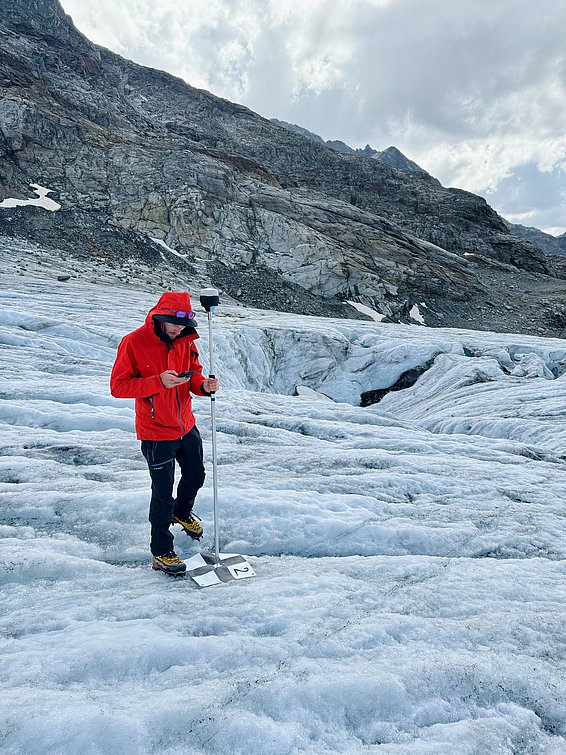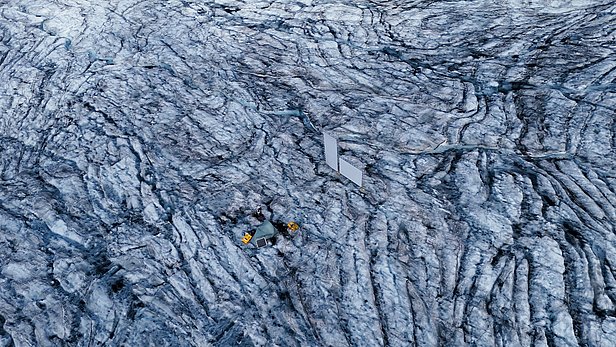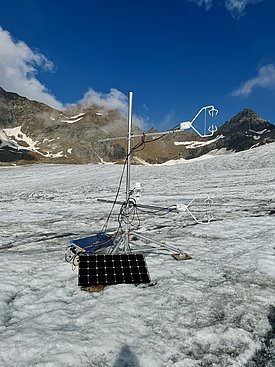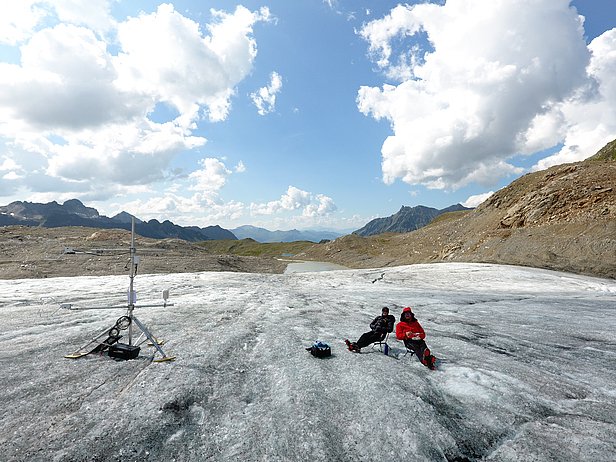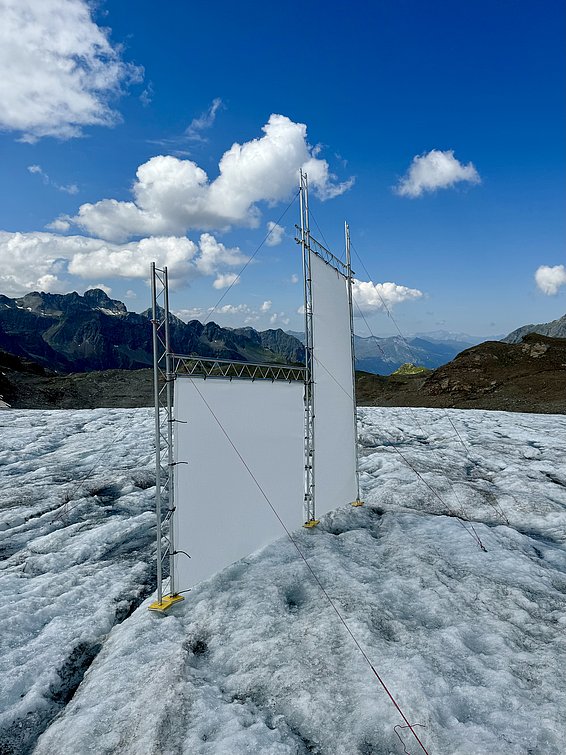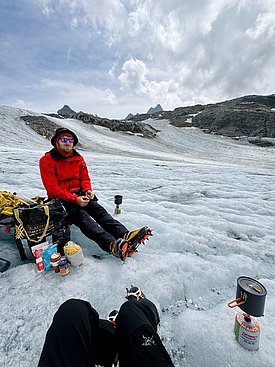SLF PhD student Patricia Asemann writes about her work on the Silvretta glacier, melting ice, falling winds and pasta with pesto.
“Dancing in the moonlight” and Toto’s “Africa” sound off our phones’ speakers as we walk up the Silvretta glacier in the rhythm of the music. Our surroundings are beautiful but our eyes are fixed on the next bit of steep, bumpy, and slightly dirty ice to set our crampons on. Walking around on a glacier is usually pretty fun, but if you do it for the umpteenth time within a week, it does get a bit old.
We are here for two weeks to study the microclimate of the glacier. During summer, it tends to be very characteristic: While the surrounding rock faces quickly heat up under the sun and subsequently heat the air around them, the cold, icy surface of the glacier cools the air above. The differences in temperature and pressure result in a cool, downwind – the “glacier wind”, sometimes called “spirit of the glacier” by mountain communities – flowing downslope towards the tongue of the glacier. On one hand, this glacier wind helps keep the surface of the ice cool on hot summer days and thus slightly reduce glacier melt. On the other hand, an increase in mean air temperature over the years due to global climate change may increasingly disturb the glacier microclimate, for example because stronger warm winds erode the glacier wind from the side, potentially accelerating glacier melt even more.
The surface is melting away under our feet ¶
Our measuring setups consist of three stations that measure the wind speed twenty times per second on two different levels above the glacier surface, as well as large, white screens made out of sticky fleece which combined with infrared cameras serve to visualize the spatially and temporally resolved temperature profile within the first meters above the ice (you may have heard about this method from Michi Haugeneder). Lastly, we use a small drone every now and then to take pictures of the areas upwind of our stations to collect information about the surface roughness. It may sound simple enough, but it all gets a bit more challenging when you set this stuff up on a surface that’s not just extremely slippery but is literally melting away as I write this. This means we have to check the positions of the tripods of all the towers, the logger boxes, and the solar panels every day, and most importantly, reset the ice screws that hold the screens in position (more or less).
Just because something worked yesterday doesn't mean it will work today ¶
When looking at a map, the Silvretta glacier doesn’t look very big. And our three stations are positioned only within the lower half of the glacier. But the small-scale, two-dimensional nature of a map easily lends itself to an underestimation of how exhausting it could be to carry equipment (or even just yourself) back and forth on the ice, day in and day out. The first thing we’ve learned: Everything takes ten times as long and is ten times as tiring as you thought it would be.
As this is the first field campaign both for Max and for me, that is just one of many things we’ve learned within the past weeks as we were preparing and conducting our experiments. We were expecting to learn about glacier-atmosphere interactions, about the structure of the glacier wind, where and how turbulence is generated, and how much energy is exchanged between the atmosphere and the glacier surface. So far, we’ve mainly learned that only because something worked yesterday doesn’t mean it’ll work today, that nothing is truly waterproof, and to drastically lower our expectations.
We'll continue next year ¶
We are lucky to be close enough to civilisation to receive frequent visitors from Klosters to our field site, resupplying us with snacks (we vastly underestimated how much pasta and pesto we would be able to consume within two weeks) and thus keeping the morale high. And we are lucky to not have to sleep in tents as some of the crew of last year’s campaign on Hintereisferner, but instead enjoy the luxuries of the Silvrettahütte and their really friendly staff.
Although we may not go home in a week with as much useful data as we had originally hoped for, we will certainly have collected many experiences that will pay off on our next field campaign on the Silvretta glacier. Next year, we want to study the glacier’s microclimate during the ablation season: As the surface cover in late spring changes from snow cover to pure ice, how does the glacier wind react? But for now, we have another week to put our latest learnings into action and enjoy the glacier’s harsh yet beautiful spirit.
Copyright ¶
WSL and SLF provide image and sound material free of charge for use in the context of press contributions in connection with this media release. The transfer of this material to image, sound and/or video databases and the sale of the material by third parties are not permitted.

